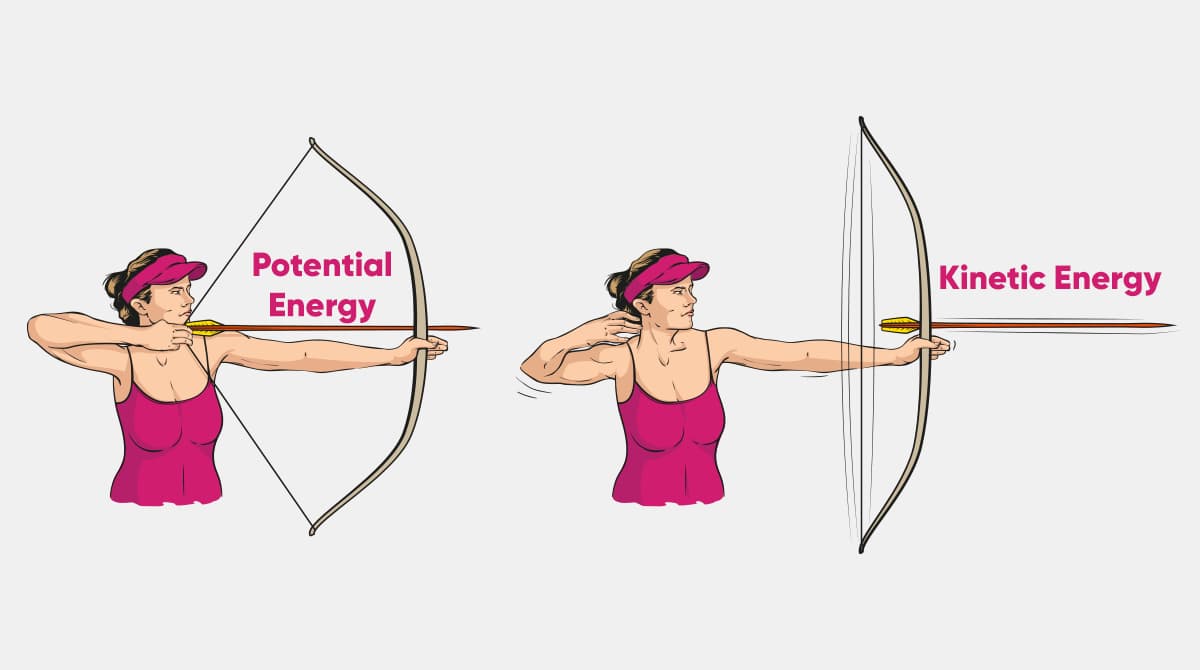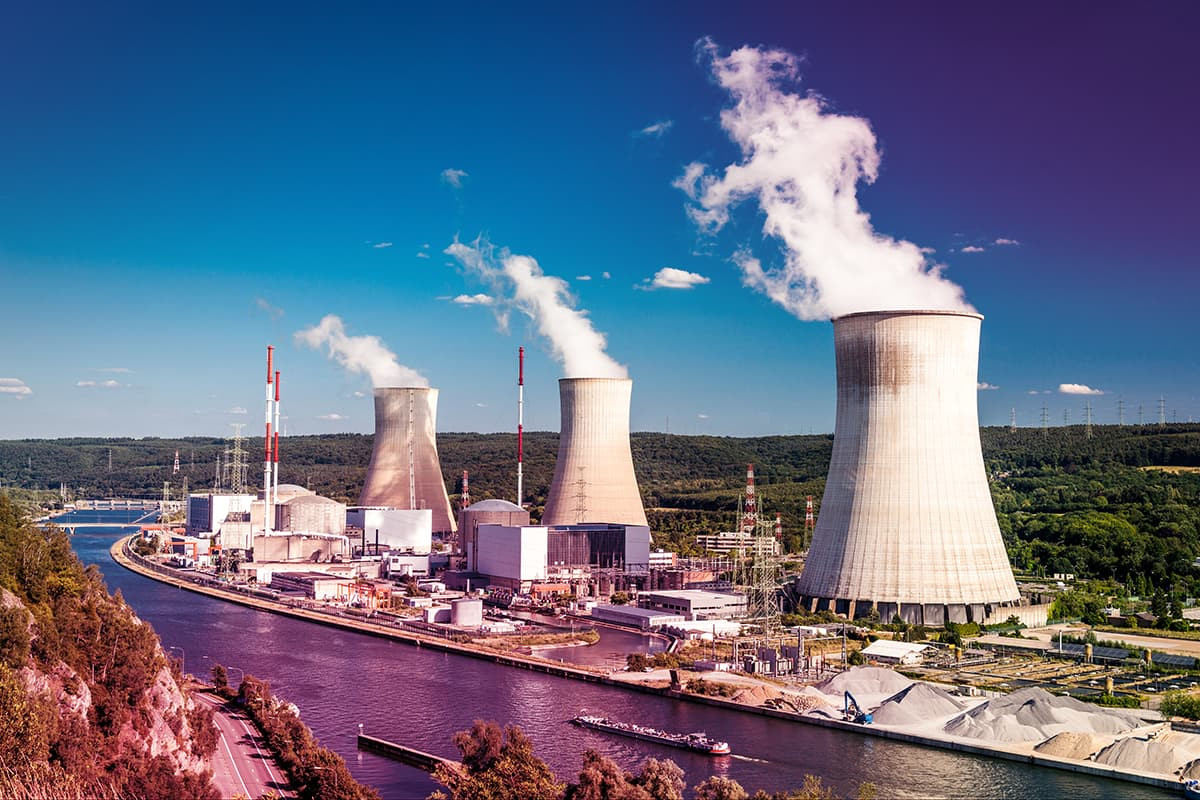
What Is Potential Energy? What Are Types of Potential Energy?
What is in this article?
Energy, the fundamental cornerstone of the universe, permeates every facet of our existence. Whether it is a moving object or a dynamic economy, the existence and transformation of energy is a topic of constant interest. In this context, the comprehension and utilization of various forms of energy hold paramount significance across numerous areas, spanning from their practical applications in our daily routines to their pivotal role in advancing scientific exploration. Potential energy is just one of these types of energy and perhaps the most interesting.
So what is potential energy? What different types are there and what role does it play in the history of mankind? Find answers to all these questions in our blog post about potential energy.
What Is Potential Energy?
Potential energy is the type of energy that an object possesses depending on its state. This energy refers to the potent force generated by external influences, encompassing the likes of gravity and elastic forces. The main purpose of potential energy is to provide the ability to do work. There are two main types of potential energy: gravitational potential energy and elastic potential energy.
Gravitational potential energy is directly related to the height of an object and is therefore important for objects up to a certain distance from the Earth. The formula for gravitational potential energy is as follows: EP = mg.h, where EP is the gravitational potential energy, m is the mass of the object, g is the gravitational acceleration (9.8 m/s²) and h is the height.
For example, consider an apple hanging from a branch. When the apple hangs on the branch, it is pulled by gravity and in this case the apple has gravitational potential energy. When the apple is released, it moves downwards under the effect of gravity and its gravitational potential energy is converted into kinetic energy. This example demonstrates that every object is subjected to the gravitational pull as it ascends in height, leading to the accumulation of potential gravitational energy within the object.
 The potential elasticity energy is present in flexible materials such as springs or tires. When such materials are stretched or compressed, they store potential energy within them, and when they are released, they do work with this energy.
The potential elasticity energy is present in flexible materials such as springs or tires. When such materials are stretched or compressed, they store potential energy within them, and when they are released, they do work with this energy.
To calculate the potential energy of elasticity, Hooke's law is used, the formula of which is as follows: PE = (1/2)kx², where PE is the potential energy of elasticity, k is the spring constant and x is the change in length of the spring.
For example, when a spring is stretched, the potential energy of elasticity is stored. When the spring is stretched, the force applied to the spring stretches the spring, increasing the elastic potential energy. When the spring is released, this potential energy is converted into kinetic energy, allowing the spring to move.
Another example is the stretching of a tire. When a tire is stretched, the potential energy of elasticity stored in it is used to return the tire to its original shape. When the tire is released, the potential energy is converted into kinetic energy, causing the tire to sway. As shown these examples, potential energy of elasticity manifests in materials that possess the ability to be deformed and subsequently revert to their original state.
Potential energy, together with kinetic energy, is one of the basic components of mechanical energy. Mechanical energy is the total energy possessed by an object depending on its ability to move. The perpetual interplay between potential energy and kinetic energy remains an ever-present phenomenon, thereby substantiating the foundational principle of energy conservation within physical systems.
Discovery of Potential Energy
The discovery of potential energy is a very important milestone in the world of science. The emergence and use of this type of energy has led to great developments in the history of mankind.
The discovery of potential energy took place in the 17th century. This concept, first studied by the famous scientist Galileo Galilei, was later developed by Isaac Newton. Thanks to Newton's law of gravitation, the study of potential energy has gained momentum, and this type of energy has become an indispensable element for the analysis of physical systems.
Prior to the unearthing of potential energy, the pivotal element of the energy concept that garnered primary emphasis was kinetic energy. Nevertheless, with the introduction of potential energy, a more comprehensive comprehension of the principle of energy conservation emerged, leading to its widespread application across various fields.
Today, potential energy is frequently used in engineering as well as in everyday life. It plays a particularly important role in power generation and storage technologies. In structures such as hydroelectric power plants and dams, the energy transformation process involves converting the potential energy of water into kinetic energy, which is then harnessed to generate electrical energy. Furthermore, the automotive and construction sectors extensively utilize springs and elastic materials that operate based on the principle of potential energy.
The discovery of potential energy has enabled the development of numerous new technologies and applications in the scientific world. Thanks to this important milestone in the history of mankind, today we can make our lives more comfortable by using many different sources of energy.
But when and by whom was electricity discovered? To learn more about the topic, take a look at our post Who invented electricity? History of Electricity.
How to Calculate Potential Energy? Formula for Potential Energy
When calculating potential energy, it is the energy that an object possesses due to its interactions with gravity and other forces. This energy arises from the object's specific position and state. The potential energy formula provides a mathematical expression that enables us to calculate the magnitude of this energy.
The calculation of potential energy is primarily based on the gravitational potential energy. The formula for gravitational potential energy is as follows: Ep = mgh. Where E_p is the potential energy, m is the mass of the object, g is the acceleration due to gravity and h is the height of the object. With this formula we can calculate the potential energy of an object due to gravity.
|
For example, let us assume that an object weighing 5 kilograms is standing at a height of 10 meters. In this case, we can use the following formula to calculate the potential energy: Ep = 5 kg * 9.8 m/s^2 * 10 m Ep = 490 J This means that the potential energy of the object in this example is 490 joules. |
On the other hand, the potential energy of a spring is also an important concept. Springs can store potential energy depending on the force applied to them. The formula for the potential energy of the spring is E_p = 1/2 kx^2. In this formula, E_p is the potential energy of the spring; k is the elasticity constant (i.e. the stiffness of the spring); x is the change in length of the spring.
Calculations of potential energy find applications in various engineering processes and everyday life scenarios. In water reservoirs, for example, the potential energy of water is converted into electrical energy and used in hydroelectric power plants. In addition, springs and elastic materials have a wide range of applications, from suspension systems in cars to toys.
By calculating potential energy, we are able to quantify the energy possessed by objects, thereby enabling us to utilize it for diverse purposes. Although the formula for potential energy varies depending on factors such as gravity and spring, the basic logic is the same: determine the energy value based on the position or state of the object.
Types of Potential Energy
Potential energy is the energy that an object has depending on its position and state. This energy arises from the potential for motion possessed by the object and has the ability to be transformed into kinetic energy. Different types of potential energy are as follows:
Gravitational Potential Energy
Gravitational potential energy is the type of energy carried by an object as a function of its mass and gravitational acceleration relative to its vertical position. This energy can be interpreted as the capacity to displace the object either above or below the reference plane.
|
The formula for gravitational potential energy is as follows: E_p = m × g × h. |
Where E_p is the gravitational potential energy (in joules), m is the mass of the object (in kilograms), g is the acceleration due to gravity (usually 9.81 m/s²), h is the height of the object relative to the reference plane (in meters).
Gravitational potential energy primarily arises from the gravitational force acting on an object, and this energy can be altered by repositioning the object to a higher or lower location. Gravitational potential energy finds frequent application in various calculations involved in construction projects, bridges, and cable car systems. This type of energy also plays an important role in the study of planets and satellite cycles.
Elastic Potential Energy
Elastic potential energy is the energy stored due to the elasticity of an object. This energy is released as the object deforms and attempts to return to its original state. This type of energy in flexible materials is an important physical concept and finds a broad spectrum of practical applications.
For example, car suspension systems can dampen vibrations and increase ride comfort by harnessing this energy. It is also used in everyday objects such as music boxes and trampolines.
Electric Potential Energy
Electric potential energy refers to the energy possessed by an electric charge when it is situated within an electric field generated by another charge. This energy can increase or decrease depending on the interaction between the two charges. The electric potential energy depends on the position and size of the charges in relation to each other.
|
The following formula can be used to calculate electric potential energy: E_p = k * q_1 * q_2 / r |
Where E_p is the electric potential energy, k is the Coulomb constant, q_1 and q_2 are the magnitudes of the two interacting charges and r is the distance between these charges.
Proper management of electric potential energy allows for its utilization across a wide range of applications. For example, batteries store electrical potential energy through chemical reactions and use this energy to power electronic devices. Similarly, batteries employed in vehicles store electrical potential energy, which can be subsequently utilized to generate electricity for the engine as required.
Potential electrical energy is an important physical concept and forms the basis for many technical applications in daily life. Effective management of this form of energy is important for energy conservation and sustainable development.

Magnetic Potential Energy
Magnetic potential energy is the energy of substances in a magnetic field due to their position. This energy results from the interactions between the magnetic moments of the atoms that make up the matter and the magnetic field surrounding them. In calculations of magnetic potential energy, the value of the energy is usually related to the position of the matter i.e. the distance between the magnetic field and the atoms.
The magnitude of the magnetic potential energy is proportional to the work done in the system during the displacement process. This form of energy plays a crucial role in the rotation or movement of objects and finds extensive use in various aspects of everyday life, such as the operation of electric motors. Magnetic potential energy analyses are also conducted in scientific and technological studies that focus on magnetic fields.
Heat Potential Energy
Heat potential energy is a form of energy that results from differences in heat. This energy arises from the thermal motion of an object or system and is a component of internal energy. Heat potential energy is used in the conversion of heat differences and plays an important role in thermodynamic systems. This type of energy is also valuable in terms of energy conservation and efficiency, as control of heat conduction leads to lower energy consumption and costs.
Chemical Potential Energy
 Chemical potential energy is the energy stored between the chemical bonds of the molecules or atoms of a matter.
Chemical potential energy is the energy stored between the chemical bonds of the molecules or atoms of a matter.
When a chemical reaction takes place, this energy is released alongside the resulting products, commonly observed in the form of heat or light. The magnitude of chemical potential energy is directly related to the strength and number of bonds in the structure of the matter.
The concept of chemical potential energy holds great significance from a thermodynamic perspective and serves as one of the primary factors influencing the stability of systems.
The chemical potential of each compound in a system is proportional to the entropy and enthalpy of that compound. When a chemical system is in equilibrium under ideal conditions, the chemical potentials of all components are equal.
Nuclear Potential Energy
Nuclear potential energy is the energy produced by the forces between the nucleons in the atomic nucleus. This energy is obtained through the nuclear force, which is created by the bonding of protons and neutrons in the atomic nucleus. Nuclear potential energy plays a particularly important role in nuclear reactions and can release large amounts of energy during these reactions.
The calculation of nuclear potential energy usually serves as a fundamental basis for studies in nuclear physics. By conducting these calculations, it becomes possible to analyze the interactions between different atomic nuclei and comprehend the energy transformations that take place as a result of these interactions. Furthermore, the control and utilization of nuclear potential energy make significant contributions to various domains, including power generation and medical applications.
Differences Between Kinetic Energy and Potential Energy
The differences between kinetic energy and potential energy can help us better understand how the two basic forms of energy work. Kinetic energy is the energy of an object in motion. This energy depends on the speed and mass of the object.
Potential energy, on the other hand, is the energy of an object depending on its state or position. This type of energy can be classified into two distinct types: gravitational potential energy and elastic potential energy.
For more information about kinetic energy, see our post What is kinetic energy?

Examples of Potential Energy
 To better understand the concept of potential energy, it can be useful to look at some examples from everyday life.
To better understand the concept of potential energy, it can be useful to look at some examples from everyday life.
First of all, we can talk about the potential energy of a spring. When a spring is stretched, the energy stored within it is in the form of potential energy. Upon releasing the spring, this potential energy is converted into kinetic energy, which enables the spring to initiate movement.
Another example is gravitational potential energy. It is the energy created by the difference in height. The fact that an object is at a certain height relative to the ground gives it potential energy. When the object is released, it moves under the influence of gravity and this potential energy transforms into kinetic energy.
It is also possible to speak of chemical potential energy. In a chemical reaction, energy is exchanged through the breaking of existing bonds and the formation of new bonds. Indeed, the difference in potential energy between the matters involved in a chemical reaction is crucial for the reaction to occur.
Lastly, let's delve into the topic of electrical potential energy. The energy storage capacity of electric charges is influenced by the potential difference between them, and this energy becomes accessible in some manner. An example of this phenomenon is the conversion of chemical energy stored in a battery into electrical energy.
By considering these examples, we can enhance our comprehension of the significance of potential energy in our everyday lives and its operation across various domains. Potential energy serves as the fundamental driving force behind motion, and this ubiquitous form of energy holds immense significance in sustaining life.
You can share our article to provide your loved ones with the information you've gathered about potential energy and help them find answers to their questions on the subject. You are also welcome to share your comments with us to offer a different perspective on the subject.

 Online Services
Online Services Application Inquiry
Application Inquiry Pay Assurance Fee
Pay Assurance Fee Query Installation Number
Query Installation Number Compensation Fee Inquiry
Compensation Fee Inquiry Automatic Payment Order Inquiry
Automatic Payment Order Inquiry Partnership
Partnership







Leave a Comment